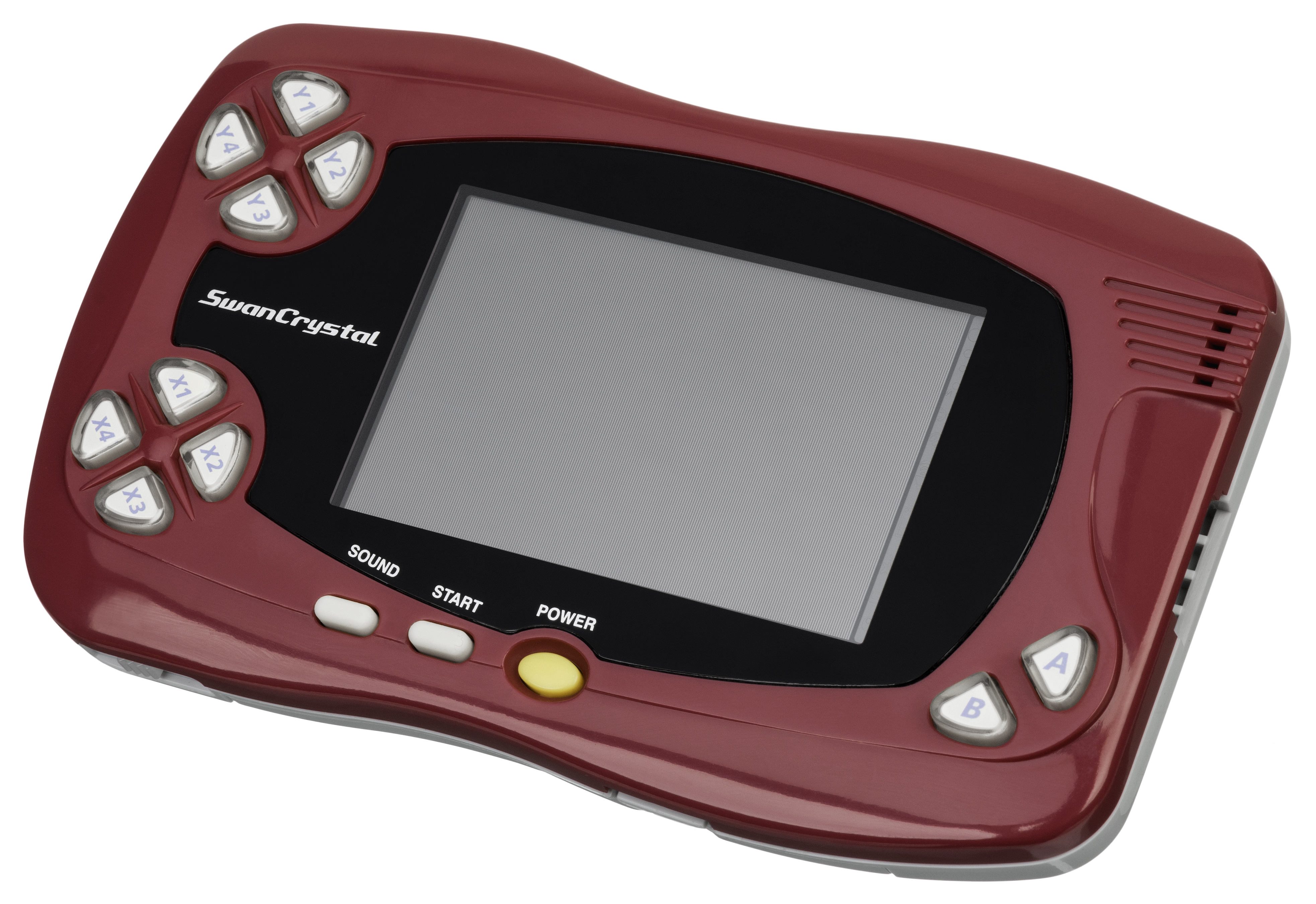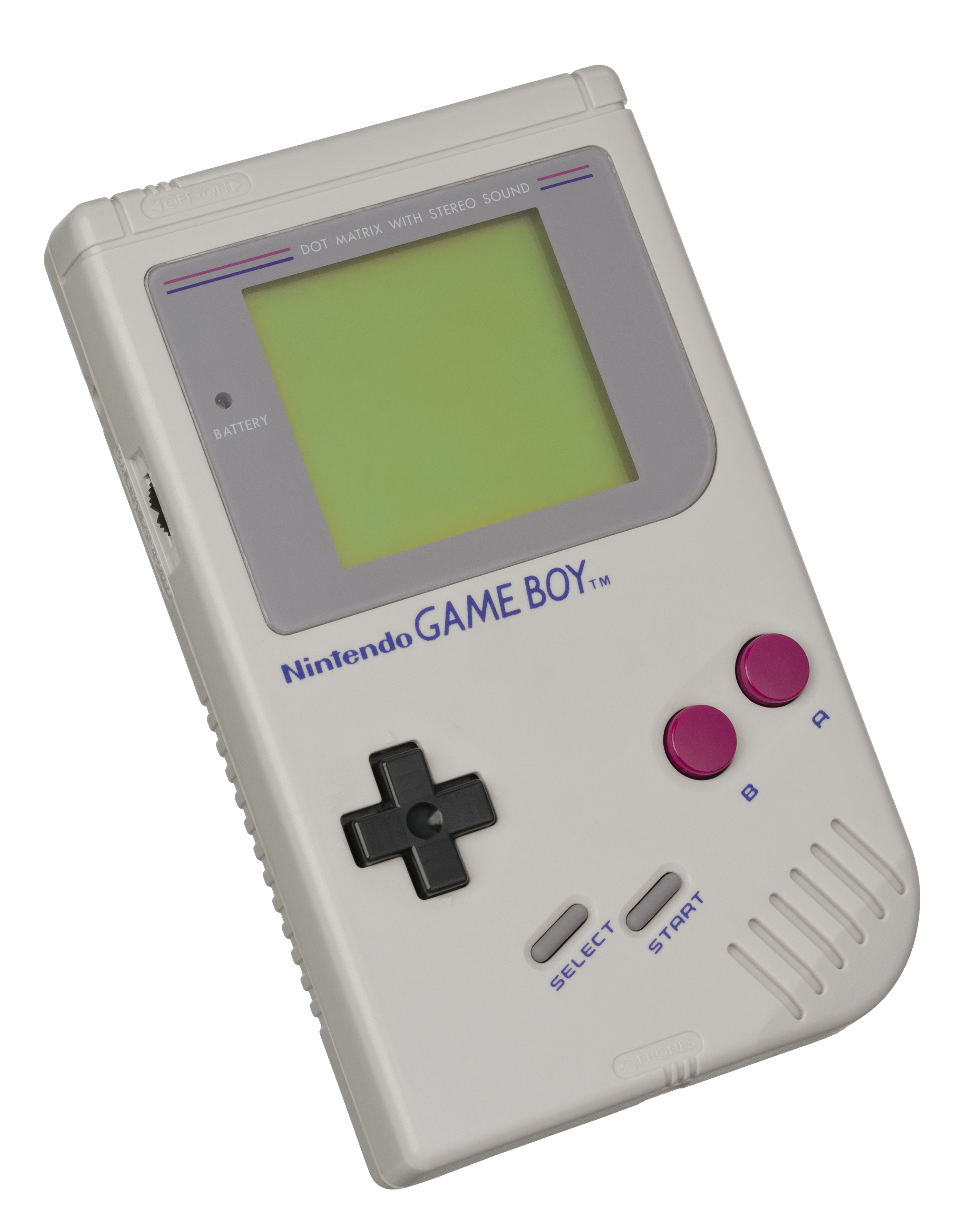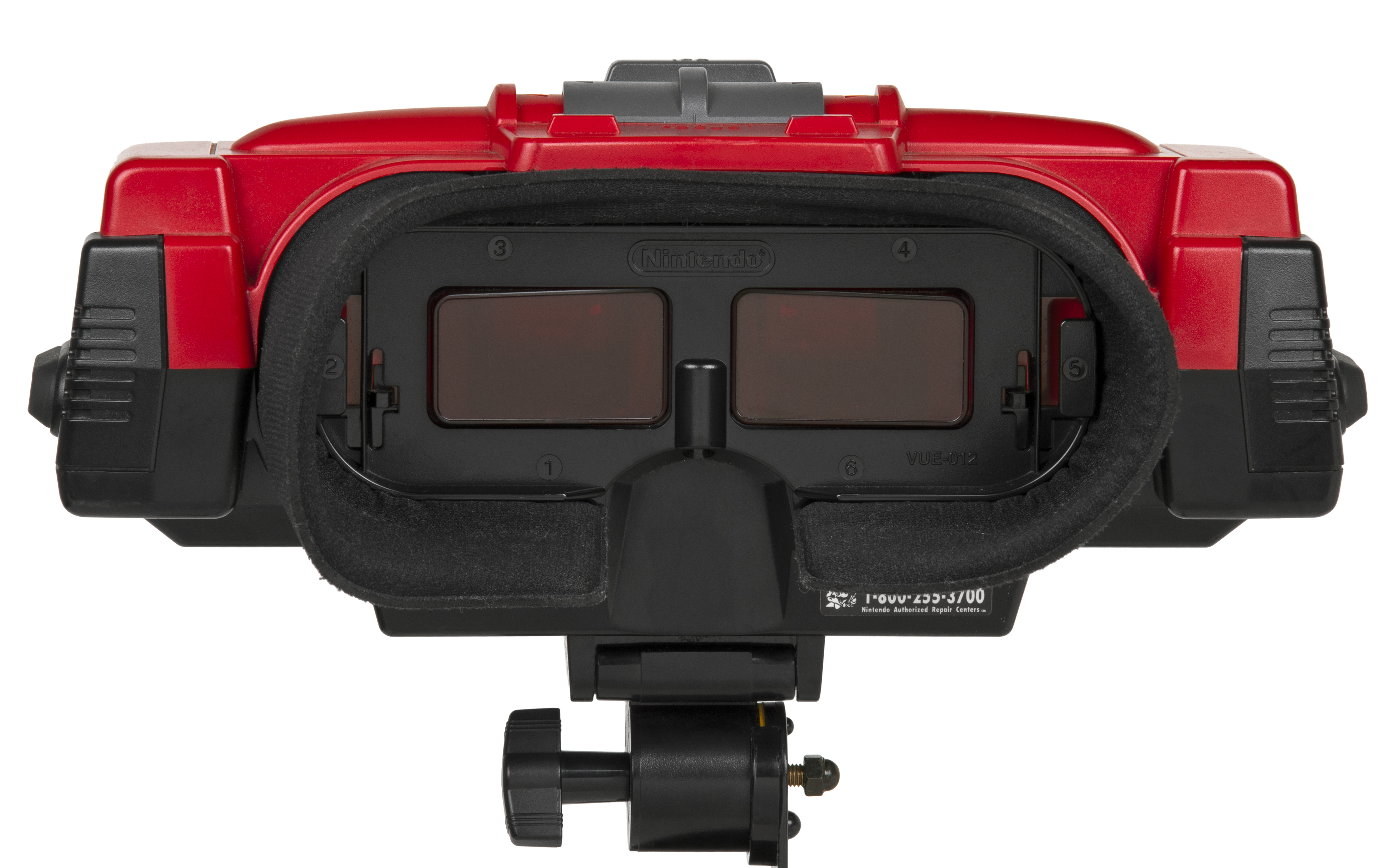|
Gunpey
, often written as ''Gun Pey'' or ''GunPey'', is a series of handheld puzzle games released by Bandai. It was originally released for the WonderSwan, and has been ported to WonderSwan Color, PlayStation, Nintendo DS and PlayStation Portable. The game was named as a tribute to the developer of the game, Gunpei Yokoi. He is known for developing several handheld consoles such as Nintendo's Game Boy, Virtual Boy, and Bandai's Wonderswan system. In the series, players move line fragments vertically in a grid in order to make a single branching line connect horizontally from one end to the other. The objective of the game differs by what game mode players choose. Gameplay ''Gunpey'' features a 5×10 cell grid and line fragments spread across it varying from shapes such as caret (∧), inverted caret (∨), left slash (\), and right slash (/). The player controls a cursor that can be moved around the playing field. The cursor only ability is to flip vertical adjacent cells, allo ... [...More Info...] [...Related Items...] OR: [Wikipedia] [Google] [Baidu] |
Gunpey WS Screenshot
, often written as ''Gun Pey'' or ''GunPey'', is a series of handheld puzzle games released by Bandai. It was originally released for the WonderSwan, and has been ported to WonderSwan Color, PlayStation, Nintendo DS and PlayStation Portable. The game was named as a tribute to the developer of the game, Gunpei Yokoi. He is known for developing several handheld consoles such as Nintendo's Game Boy, Virtual Boy, and Bandai's Wonderswan system. In the series, players move line fragments vertically in a grid in order to make a single branching line connect horizontally from one end to the other. The objective of the game differs by what game mode players choose. Gameplay ''Gunpey'' features a 5×10 cell grid and line fragments spread across it varying from shapes such as caret (∧), inverted caret (∨), left slash (\), and right slash (/). The player controls a cursor that can be moved around the playing field. The cursor only ability is to flip vertical adjacent cells, allowing ... [...More Info...] [...Related Items...] OR: [Wikipedia] [Google] [Baidu] |
WonderSwan
The (ワンダースワン) is a handheld game console released in Japan by Bandai. It was developed by Gunpei Yokoi's company Koto Laboratory and Bandai, and was the last piece of hardware Yokoi developed before his death in 1997. Released in 1999 in the sixth generation of video game consoles, the WonderSwan and its two later models, the WonderSwan Color and SwanCrystal were officially supported until being discontinued by Bandai in 2003. During its lifespan, no variation of the WonderSwan was released outside of Japan. Powered by a 16-bit processor, the WonderSwan took advantage of a low price point and long battery life in comparison to its competition, Nintendo's Game Boy Color and SNK's Neo Geo Pocket Color. Later improvements took advantage of quality upgrades to the handheld's screen and added color. The WonderSwan is playable both vertically and horizontally, and features a unique library of games, including numerous first-party titles based on licensed anime propert ... [...More Info...] [...Related Items...] OR: [Wikipedia] [Google] [Baidu] |
WonderSwan Color
The (ワンダースワン) is a handheld game console released in Japan by Bandai. It was developed by Gunpei Yokoi's company Koto Laboratory and Bandai, and was the last piece of hardware Yokoi developed before his death in 1997. Released in 1999 in the sixth generation of video game consoles, the WonderSwan and its two later models, the WonderSwan Color and SwanCrystal were officially supported until being discontinued by Bandai in 2003. During its lifespan, no variation of the WonderSwan was released outside of Japan. Powered by a 16-bit processor, the WonderSwan took advantage of a low price point and long battery life in comparison to its competition, Nintendo's Game Boy Color and SNK's Neo Geo Pocket Color. Later improvements took advantage of quality upgrades to the handheld's screen and added color. The WonderSwan is playable both vertically and horizontally, and features a unique library of games, including numerous first-party titles based on licensed anime proper ... [...More Info...] [...Related Items...] OR: [Wikipedia] [Google] [Baidu] |
Wonderswan
The (ワンダースワン) is a handheld game console released in Japan by Bandai. It was developed by Gunpei Yokoi's company Koto Laboratory and Bandai, and was the last piece of hardware Yokoi developed before his death in 1997. Released in 1999 in the sixth generation of video game consoles, the WonderSwan and its two later models, the WonderSwan Color and SwanCrystal were officially supported until being discontinued by Bandai in 2003. During its lifespan, no variation of the WonderSwan was released outside of Japan. Powered by a 16-bit processor, the WonderSwan took advantage of a low price point and long battery life in comparison to its competition, Nintendo's Game Boy Color and SNK's Neo Geo Pocket Color. Later improvements took advantage of quality upgrades to the handheld's screen and added color. The WonderSwan is playable both vertically and horizontally, and features a unique library of games, including numerous first-party titles based on licensed anime propert ... [...More Info...] [...Related Items...] OR: [Wikipedia] [Google] [Baidu] |
Gunpei Yokoi
, sometimes transliterated Gumpei Yokoi, was a Japanese video game designer. He was a long-time Nintendo employee, best known as creator of the Game & Watch handheld system, inventor of the cross-shaped Control Pad, the original designer of the Game Boy, and producer of a few long-running and critically acclaimed video game franchises such as '' Metroid'' and ''Kid Icarus''. Career Yokoi graduated from Doshisha University with a degree in electronics. He was first hired by Nintendo in 1965 to maintain the assembly-line machines used to manufacture its hanafuda cards. In 1966, Hiroshi Yamauchi, president of Nintendo at the time, came to a hanafuda factory where Yokoi was working and took notice of a toy, an extending arm that Yokoi made for his own amusement during spare time while doing maintenance. Yamauchi ordered Yokoi to develop it as a proper product for the Christmas rush. The Ultra Hand was a huge success, and Yokoi was asked to work on other Nintendo toys, including t ... [...More Info...] [...Related Items...] OR: [Wikipedia] [Google] [Baidu] |
Q Entertainment
was a Japanese video game developer. The studio created, produced, and published digital entertainment content across multiple game consoles, PC broadband and mobile units. It was founded on October 10, 2003 by Tetsuya Mizuguchi, formerly of Sega (where he was best known for producing the Dreamcast games ''Space Channel 5'' and ''Rez (video game), Rez''), and Shuji Utsumi, former founding member of Sony Computer Entertainment America, Senior VP of Sega Enterprises, Ltd., and head of Disney (Buena Vista Games) Asia. It was best known for their music and luminary action puzzle game series ''Lumines'', which was released worldwide in 2004/2005 for the PlayStation Portable system and has now developed into mobile (''Lumines Mobile''), Xbox Live Arcade (''Lumines Live!'') and PlayStation 2 (''Lumines Plus'') platforms. Q Entertainment's line-up also includes the action puzzle title ''Meteos'' for the Nintendo DS and fantasy action title ''Ninety-Nine Nights'' for the Xbox 360. Their ... [...More Info...] [...Related Items...] OR: [Wikipedia] [Google] [Baidu] |
Puzzle Video Game
Puzzle video games make up a broad genre of video games that emphasize puzzle solving. The types of puzzles can test problem-solving skills, including logic, pattern recognition, sequence solving, spatial recognition, and word completion. History Puzzle video games owe their origins to brain teasers and puzzles throughout human history. The mathematical strategy game Nim, and other traditional, thinking games, such as Hangman and Bulls and Cows (commercialized as ''Mastermind''), were popular targets for computer implementation. Universal Entertainment's ''Space Panic'', released for the arcades in 1980, is a precursor to later puzzle-platform games such as Apple Panic (1981), ''Lode Runner'' (1983), ''Door Door'' (1983), and ''Doki Doki Penguin Land'' (1985). ''Blockbuster'', by Alan Griesemer and Stephen Bradshaw (Atari 8-bit, 1981), is a computerized version of the Rubik's Cube puzzle. ''Snark Hunt'' (Atari 8-bit, 1982) is a single-player game of logical deduction, a ... [...More Info...] [...Related Items...] OR: [Wikipedia] [Google] [Baidu] |
Tarepanda
Tarepanda (たれぱんだ) is a cute panda character owned by the company San-X . The term "tare" means "droopy" in Japanese. History Creation Tarepanda is licensed by San-X, the company that introduced Tarepanda stickers in 1995. It was designed by and was inspired when she was being tired. Characteristics Tarepanda is a character that moves by rolling over, with a record speed of 2.75 m/h. Tarepanda's favorite food is mochi , especially suama .San-X.net. (2011). Tarepanda. Retrieved May 29, 2011, from http://www.san-x.jp/characters/tarepanda.htmlTariepie. Retrieved May 29, 2011, from http://tarepie.tripod.com/sum3.htm Popularity In February 1998, San-X launched Tarepanda erasers and letter pads, which proved enormous hits. San-X believed these products were successful because they were released shortly after the Asian financial crisis of autumn 1997, a time when many people in Japan were facing layoffs and, consequently, were sympathetic toward a "worn-out" panda character ... [...More Info...] [...Related Items...] OR: [Wikipedia] [Google] [Baidu] |
Virtual Boy
The Virtual Boy is a 32-bit tabletop portable video game console developed and manufactured by Nintendo. Released in 1995, it was marketed as the first console capable of displaying stereoscopic "3D" graphics. The player uses the console like a head-mounted display, placing the head against the eyepiece to see a red monochrome display. The games use a parallax effect to create the illusion of depth. Sales failed to meet targets, and Nintendo ceased distribution and game development in 1996, having released only 22 games for the system. Development of the Virtual Boy lasted four years and began under the project name VR32. Nintendo entered a licensing agreement to use a stereoscopic LED eyepiece technology which had been developed since the 1980s by US company Reflection Technology. It also built a factory in China to be used only for Virtual Boy manufacturing. Over the course of development, the console technology was downscaled due to high costs and potential health concerns, ... [...More Info...] [...Related Items...] OR: [Wikipedia] [Google] [Baidu] |
Famitsu
formerly ''Famicom Tsūshin'', is a line of Japanese video game magazines published by Kadokawa Game Linkage (previously known as Gzbrain), a subsidiary of Kadokawa. ''Famitsu'' is published in both weekly and monthly formats as well as in the form of special topical issues devoted to only one console, video game company, or other theme. the original ''Famitsu'' publication, is considered the most widely read and respected video game news magazine in Japan. From October 28, 2011, the company began releasing the digital version of the magazine exclusively on BookWalker weekly. The name ''Famitsu'' is a portmanteau abbreviation of the word "Famicom" itself comes from a portmanteau abbreviation of "Family Computer" (the Japanese name for the Nintendo Entertainment System)—the dominant video game console in Japan during the 1980s. History , a computer game magazine, started in 1982 as an extra issue of ''ASCII'', and later it became a periodic magazine. was a column in ''Logi ... [...More Info...] [...Related Items...] OR: [Wikipedia] [Google] [Baidu] |
Bandai Namco Games
is a Japanese multinational corporation, multinational video game video game publisher, publisher headquartered in Minato-ku, Tokyo. Its international branches, Bandai Namco Entertainment America and Bandai Namco Entertainment Europe, are respectively headquartered in Irvine, California and Lyon, Lyon, France. It is a wholly-owned subsidiary of Bandai Namco Holdings, an entertainment conglomerate. Bandai Namco Entertainment was formed on 31 March 2006, following a corporate merge between Namco and Bandai on 29 September of the previous year. Originally known as , it merged Bandai Games and Namco Networks in January to create Namco Bandai Games America. Namco Bandai Games absorbed Banpresto's video game division in 2008 and dissolved Bandai Networks in 2009. Development operations were spun off into a new company in 2012, Namco Bandai Studios (now called Bandai Namco Studios), to help create faster development time and tighter cohesion between development teams. Namco Bandai Ga ... [...More Info...] [...Related Items...] OR: [Wikipedia] [Google] [Baidu] |





